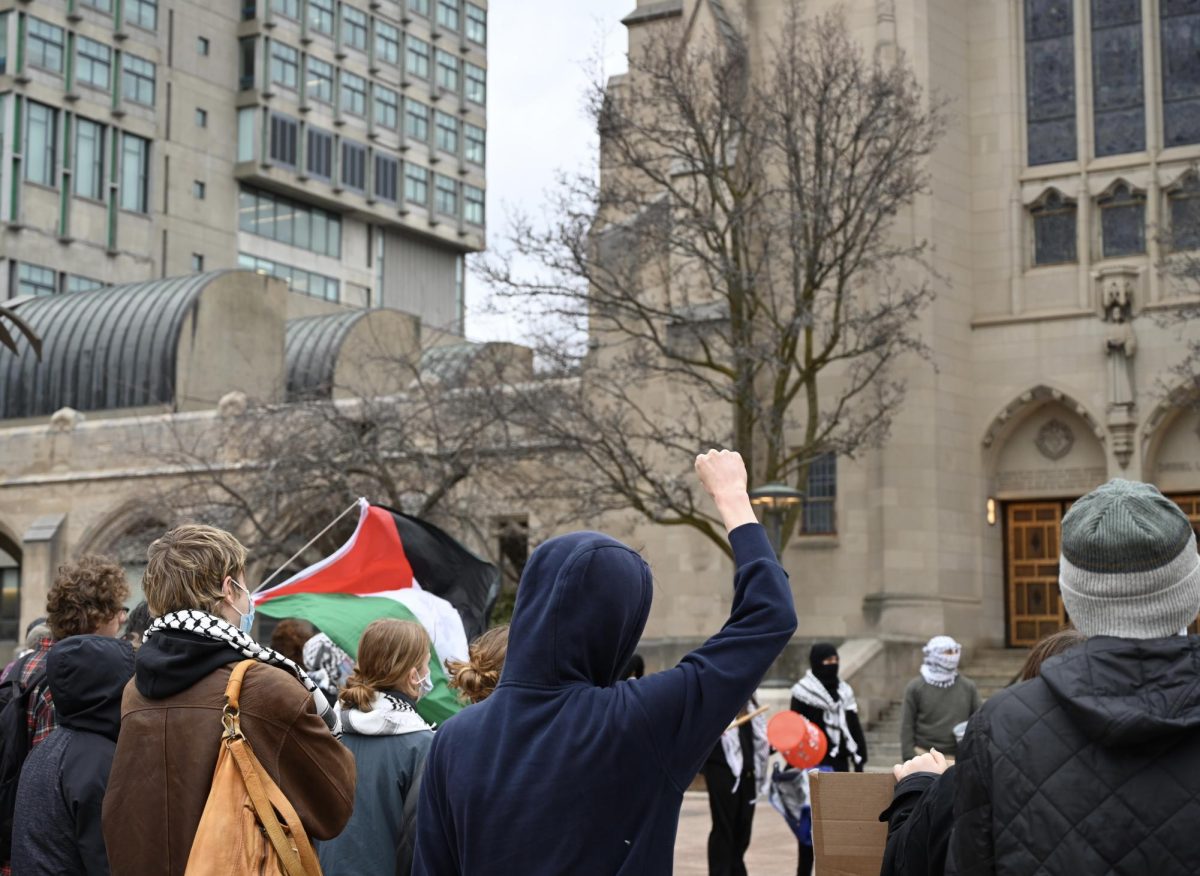“Brotherhood of the Wolf” is an odd film indeed. Judging from the look and sound of it, it wants to be taken seriously: its gorgeous cinematography, opulent production design and numerous characters in powdered wigs suggest Merchant-Ivory, not action-packed horror-mystery. And this might be the fatal flaw of “Brotherhood” for some viewers: taken seriously, director Christophe Gans’ film can come across as a jumbled, derivative mess. But, taken for what it is – an absurd and often exhilarating exercise in genre-crossing–”Brotherhood” becomes solid entertainment.
It may sound strange for a film that juggles a werewolf-type beast, an Iroquois martial artist, effete French aristocrats and the obligatory romantic subplot, but “Brotherhood”– which was one of the most popular films in France last year– is based, albeit very loosely, on historical fact. In 1764, in the French region of Gevaudan, there was, in fact, a mysterious beast that terrorized the countryside, killing dozens of women and children before ultimately being discovered as a wolf. But, aside from this central conceit and a few small facts, “Brotherhood” is borne entirely of the imaginations of Gans and screenwriter Stephane Cabel.
The story as told by Gans and Cabel actually begins some thirty years later, during the French Revolution, with an aging aristocrat (Jacques Perrin) about to be sent to his death. Before he meets the guillotine, he wants to put on paper the real story about the Beast of Gevaudan. We are thus related the tale of Gregoire de Fronsac (Samuel Le Bihan), a naturalist for the King’s Garden who spent some time in the Americas, and his reticent Iroquois sidekick, Mani (Mark Dacascos). Right away, we realize this is no ordinary duo: in their introductory scene, we see Mani take out an entire group of thugs using martial arts moves straight out of a Hong Kong action flick.
Fronsac has come to investigate the Beast and, being the intellectual he is, quickly concludes that it is neither an ordinary wolf nor some supernatural being. He eventually discovers something far more complex and insidious is going on, and as he and Mani delve further into the mystery, there is no shortage of impressively staged fight sequences and serpentine plot twists.
There is also a full gallery of supporting characters, including the Marquis d’Apcher (Jeremie Renier), the one-armed Jean-Francois (Vincent Cassel) and the latter’s sister, Marianne (Emilie Dequenne), who becomes the object of the token romance with Fronsac. Of course, as only makes sense with a film like this, many of these characters aren’t quite what they seem, and it takes a lot of detective work and roundhouse kicking on the parts of Fronsac and Mani to find out what’s really going on and where everyone fits into it.
Alas, the one major flaw in “Brotherhood” is that there’s often too much going on. Clocking in at nearly two-and-a-half hours, “Brotherhood” could have been a much better film if it had a good half hour to forty-five minutes lopped off. Too many characters, subplots and potential subplots are introduced, and Gans doesn’t seem to know what to do with all of them.
The first half in particular seems to drag, as we are subjected to a variety of generally unnecessary expository scenes. Perhaps no film involving the French aristocracy would be complete without multiple bordello sequences, but here, it just leaves the viewer wondering what happened to this Beast everyone was so worked up about.
When “Brotherhood” gets going, however, it compensates for the extraneous bits. The fights, choreographed by Philip Kwok (“Hard-Boiled”), may seem out of place in 18th century France, but are so well done and fun to watch that it’s easy to go along for the ride. Kwok’s choreography is complemented by some fancy editing, which will undoubtedly draw comparisons to “The Matrix” for its use of alternating fast and slow motion, freeze frames and other stylistic quirks. And even when “Brotherhood” falls on the dull side, it’s still nice to look at. Dan Laustsen’s cinematography is superb, seeming to make every raindrop and wisp of fog come to life. This is the kind of film where the atmosphere practically drips off the celluloid.
And what about the Beast? It finally makes an appearance in the second half, and although movie monsters are always more effective when they remain off screen and in the shadows, the Beast here–created by Jim Henson’s Creature Shop–manages to serve its purpose well enough. Perhaps it is because, by the time the Beast shows up, Gans has introduced so many new elements into the story that the success of the film doesn’t hinge on the impressiveness of its special effects. The Beast becomes less the focus of the plot and more of a trigger, leading Fronsac and his companion to further adventures.
No one will accuse “Brotherhood of the Wolf” of being an original film. Virtually everything in it is culled from cinematic clichés old and new, from the Asian-influenced fight sequences to the unconvincing romance to the mysterious Indian sidekick. But never mind that; Gans goes so over the top that it’s difficult not to have fun. It’s just unfortunate that another trip to the editing room could have resulted in a film that was just as exciting, but nowhere near as messy. As it is, “Brotherhood” is entertaining enough to overcome its glaring flaws, but it could have easily been more. B




















































































































